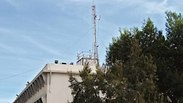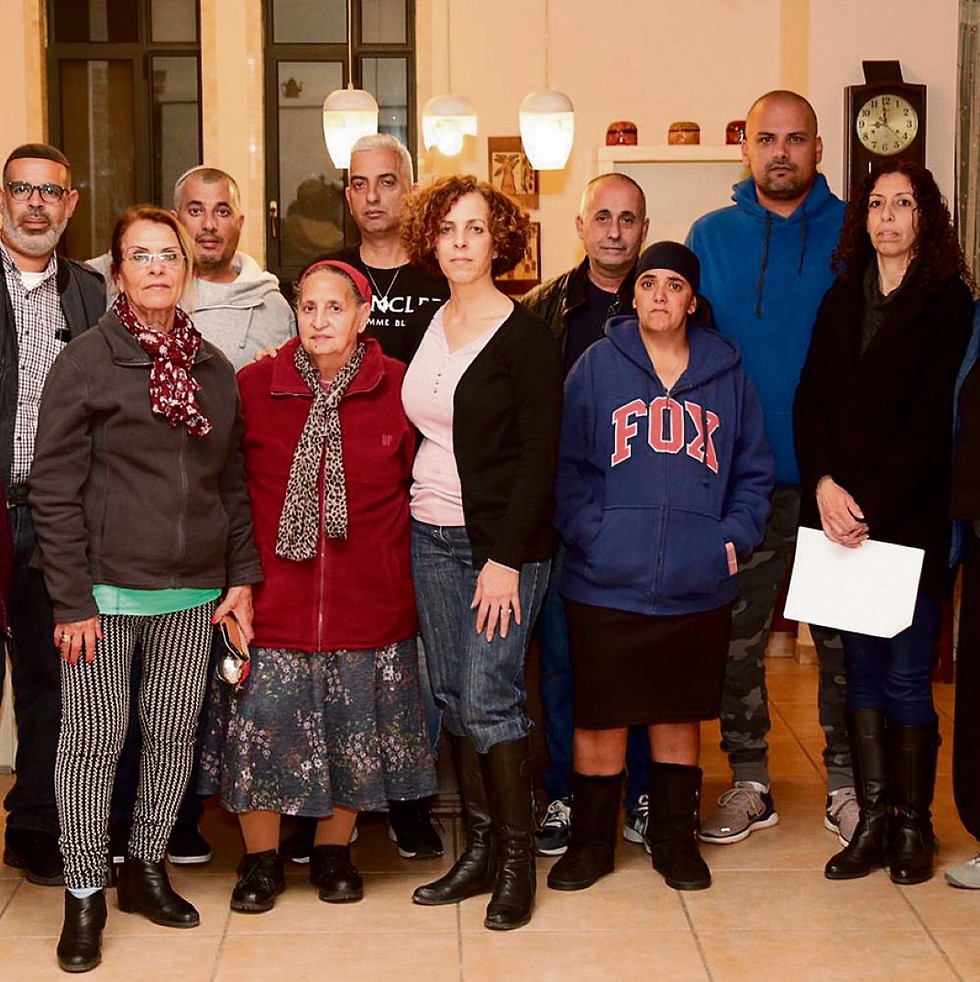

The curious case of the concentration of cancer
Those living within the range of a cell antenna located atop of a municipality building in the central Israeli town of Rosh HaAyin have battled the terrible disease—which they believe caused by radiation—one by one. And in the face of the local authorities' inaction they are taking the issue to court.
In the HaRakafot neighborhood in the heart of Rosh HaAyin in central Israel, between old houses surrounded by spacious courtyards, stands an old three-story office building that belongs to the municipality. On top of the building, at 21 Shilo Street, is installed a high-altitude cell antenna surrounded by several similar, smaller devices.
Over the past three decades, these antennas have not only been uglying up the neighborhood’s landscape but also might have contributed to a cancer epidemic among those living within its range.
Within 500 meter radius of the building there is an unprecedented concentration of cancer sufferers. In almost every household in that small area, you can find at least one family member who has dealt with malignant tumors. Some 40 patients have already died, and others are still fighting the disease, prompting the residents to believe that the source of their ill health is radiation emitted by the cell antennas.

The population there consists of mostly elderly people, and the residents pin their hopes on the municipality, which is waging a legal battle against the cell phone companies, demanding the antennas be removed (given that the contracts with the companies ended nearly two years ago). Next month, the parties are expected to meet in court, but it is not clear how long the legal proceedings will last, which leaves many residents fearing for their lives.
"When the first ones died, we thought it was a coincidence," said Leah Orkabi, whose husband, Haim, died of cancer three years ago. "Overtime, we noticed the disease hasn’t skipped a single home here. Anyone who is within unfettered range of the antenna is stricken with cancer. “
“My husband had many friends in the neighborhood—none of whom are alive today. When my husband complained about the issue many years ago, he was told that as a municipal employee, it would be wise for him to keep quiet. His silence cost him his life," the wife added.
Shalom Cafri lives two houses away from the Orkabi family, and is also currently battling cancer. "The idea that this entire area is carcinogenic is supposed to alarm the authorities," he said. "People here are dying one by one. Those who live here stay at home most of the day so the exposure to the radiation never ceases. Many of my neighbors died, people we grew up with … no one can convince me it’s fate or a coincidence.”
Dina Dov and Batya Sion-Sudami also live in the area. Dina was widowed five years ago when her husband died from cancer, while Batya lost her father to the disease two years ago. "For years we have been shouting about this but no one was listening," said Batya. "It's easy to leave residents here to their own devices, while we keep losing more and more people.”
Yossi Sudami, who sees the antenna from his backyard, has recently recovered from prostate cancer. "I attended funerals of several friends and neighbors, and the fear that the next time it might be you resonates with me,” he said. “At the last funeral, I met our mayor Shalom Ben-Moshe. I told him, 'You have the power to revive us.' Fortunately, he is an integral part of our struggle. The repercussions of this phenomenon will be felt by the next generation, and the children who grew up here left the neighborhood one by one."
Sharon Natan, whose father died of the disease, said despite having inherited land in the area, he doesn’t intend to stay there. "My wife has vetoed me building something here. We’ve moved to a new neighborhood and my mother stayed here alone. I had to leave the place where I grew up out of fear for my life.”
Tehila Zvi said the authorities appear to be impervious to the local residents’ appeal. "We come across ridiculous responses that imply if we take down the antennas, we won’t have cell-phone reception, as if that's the only important thing. People are dying here!"
The fact that there is a cluster of kindergartens on a nearby street—attended by 180 students between the ages of three and six—adds to the residents' concern, which is not unfounded. A kindergarten teacher and three kindergarten assistants have died of cancer, two of them fairly recently.
Limor Wahab, said the fact that her daughter—who’s studying in one of the kindergartens—is exposed to radiation, keeps her awake at night. "The next logical step is strikes and demonstrations, because there is no other way."















